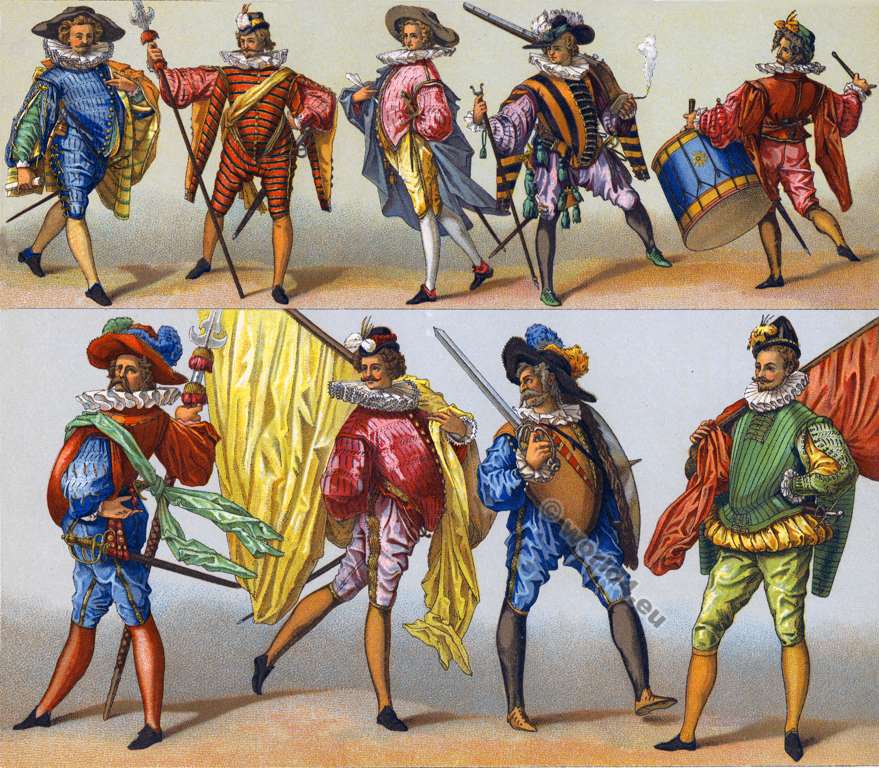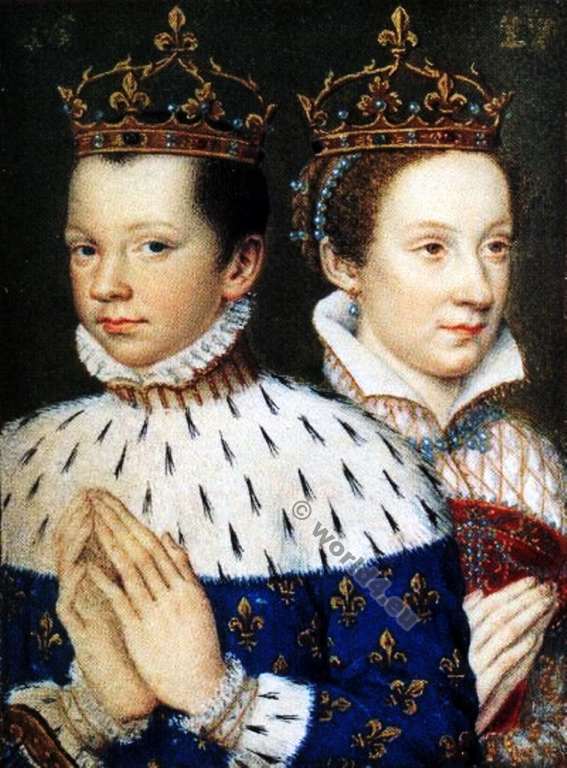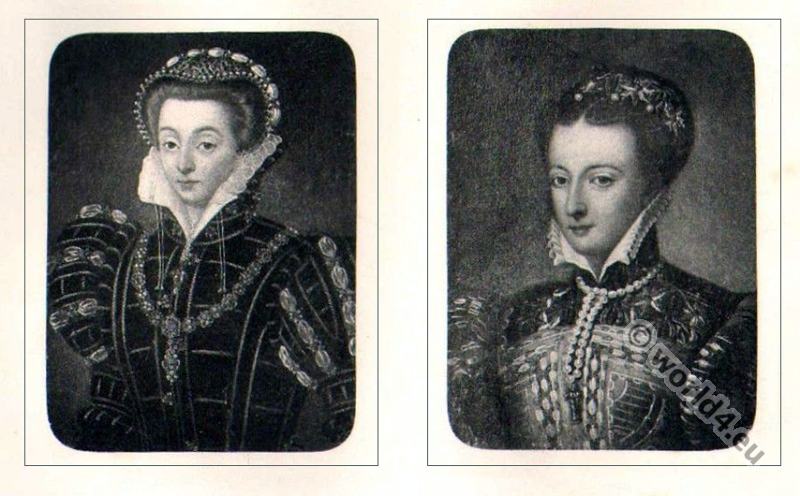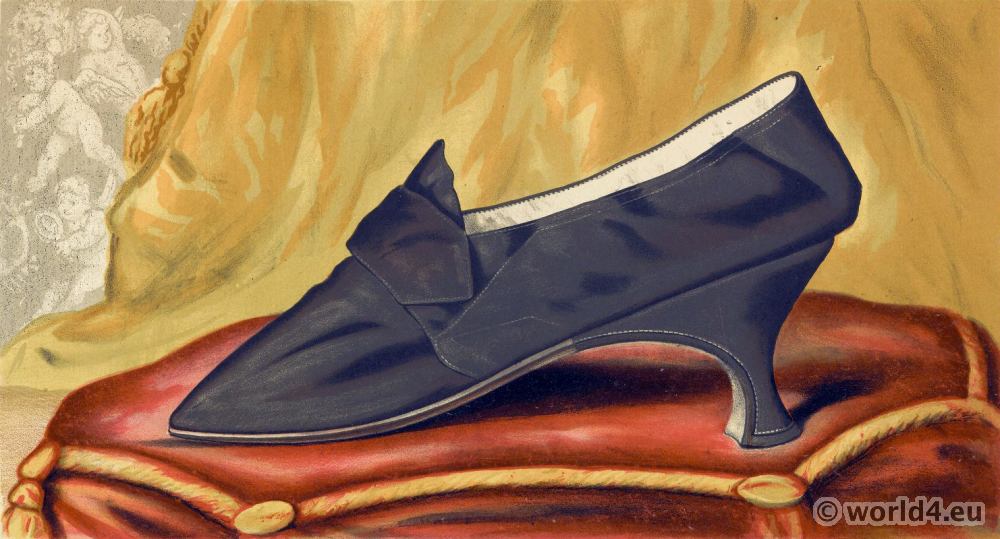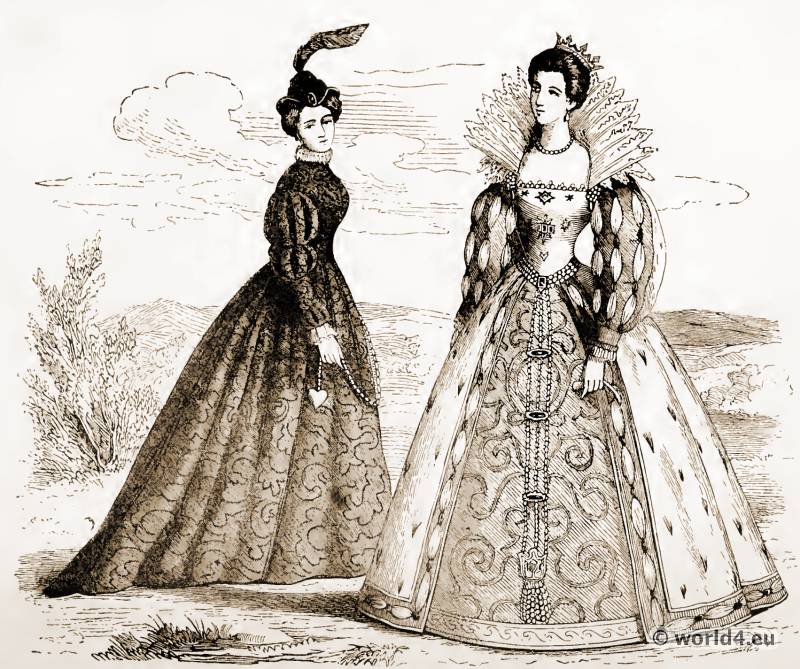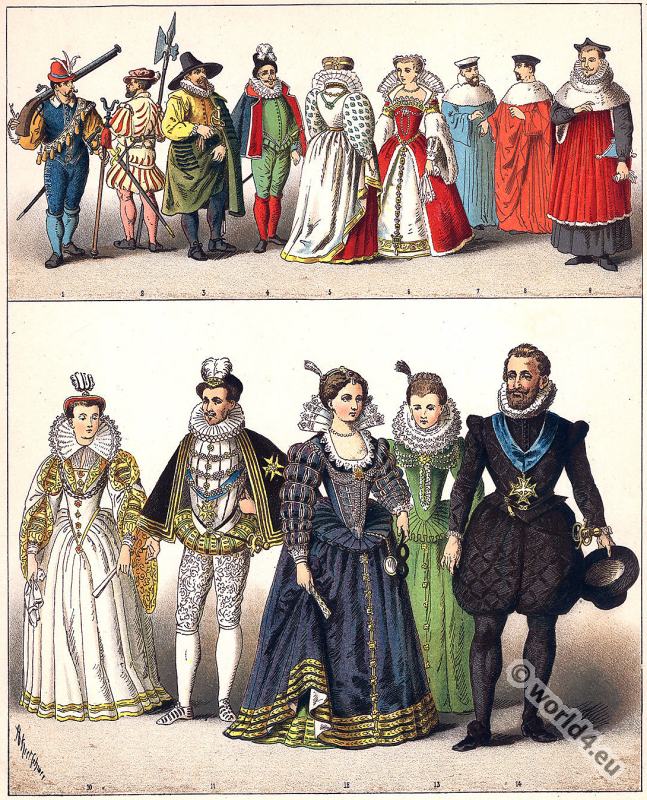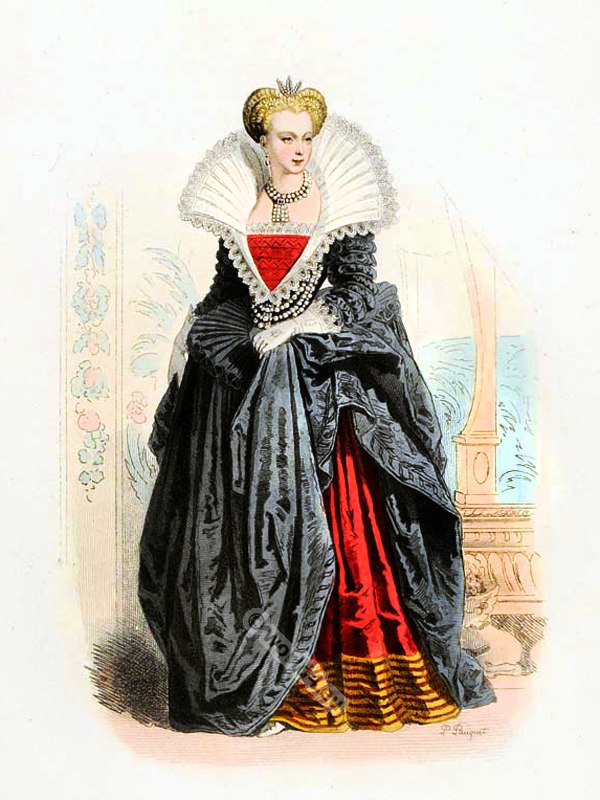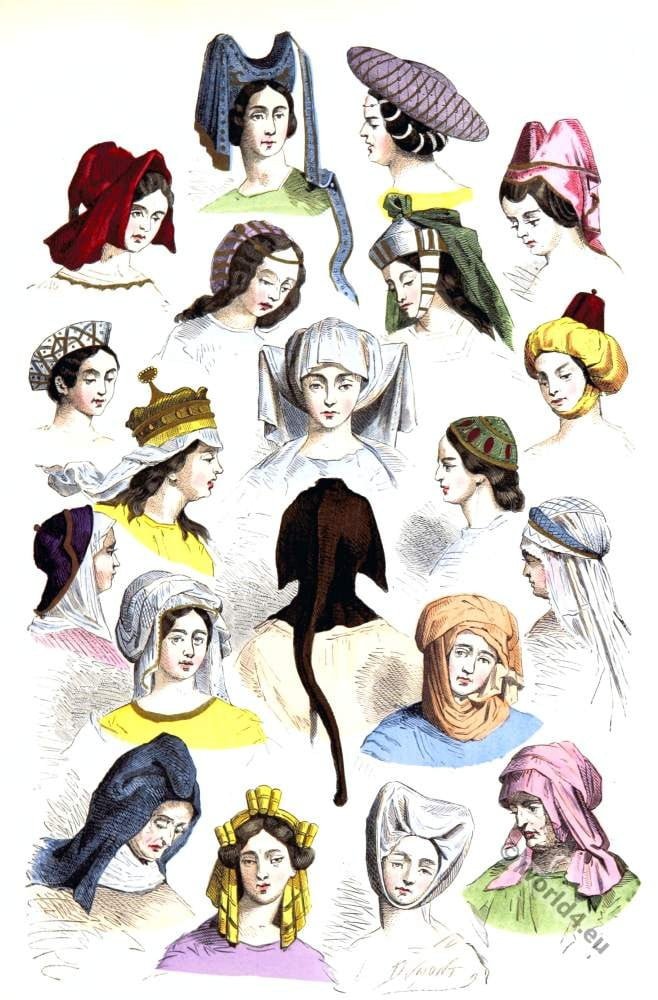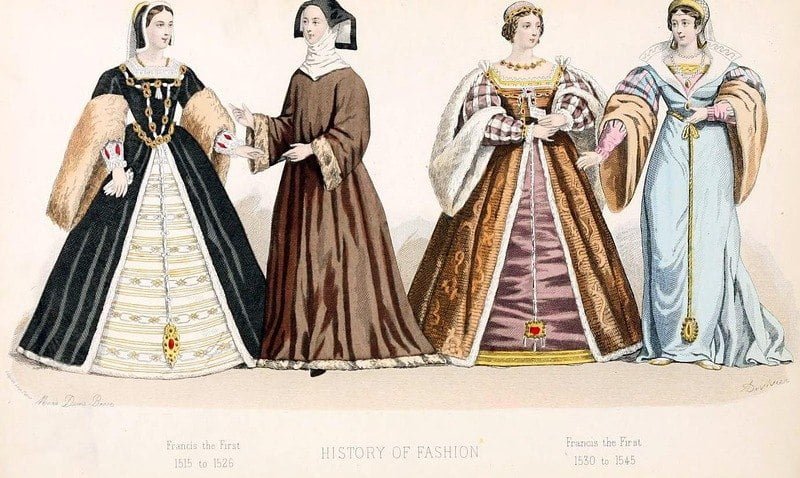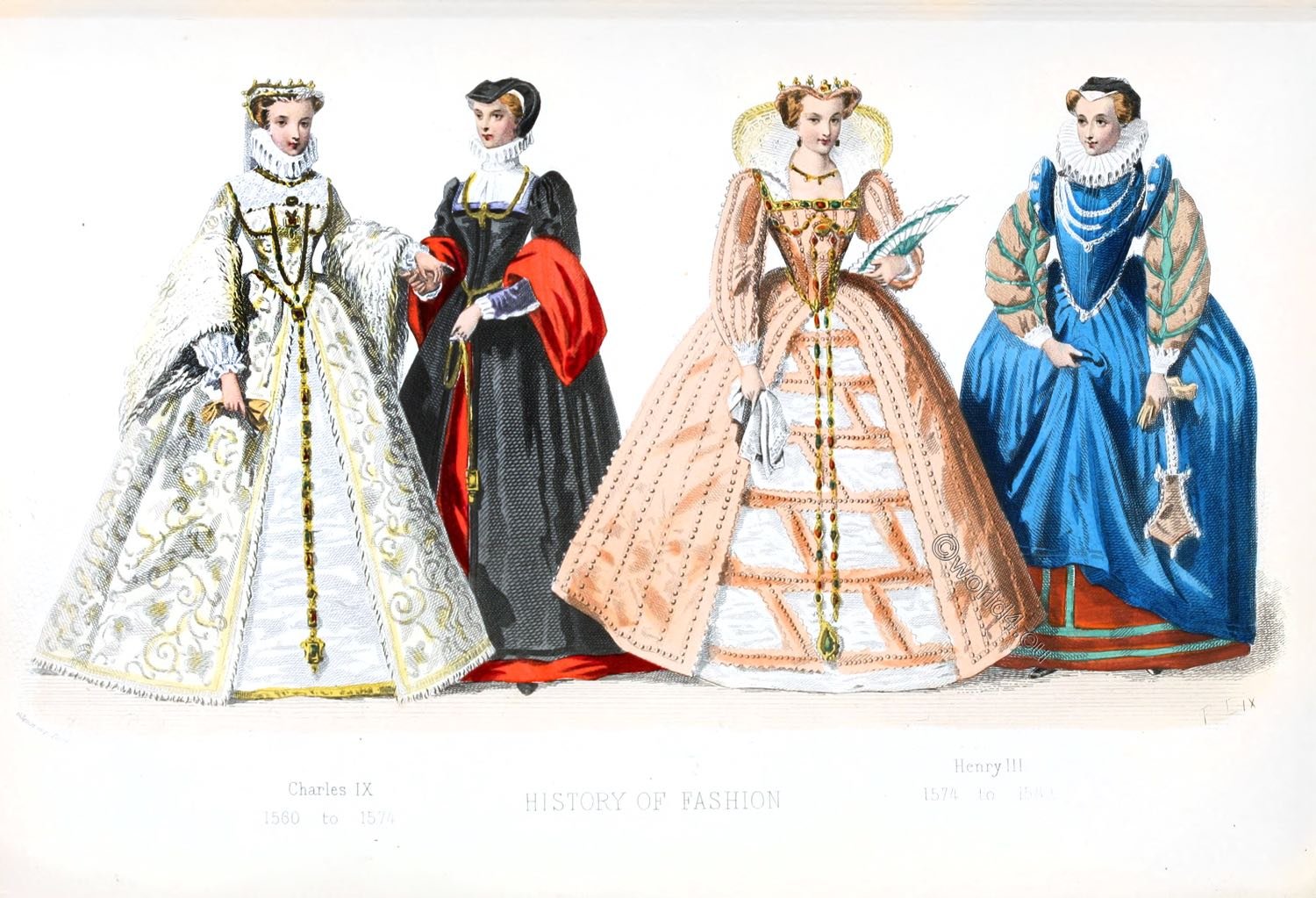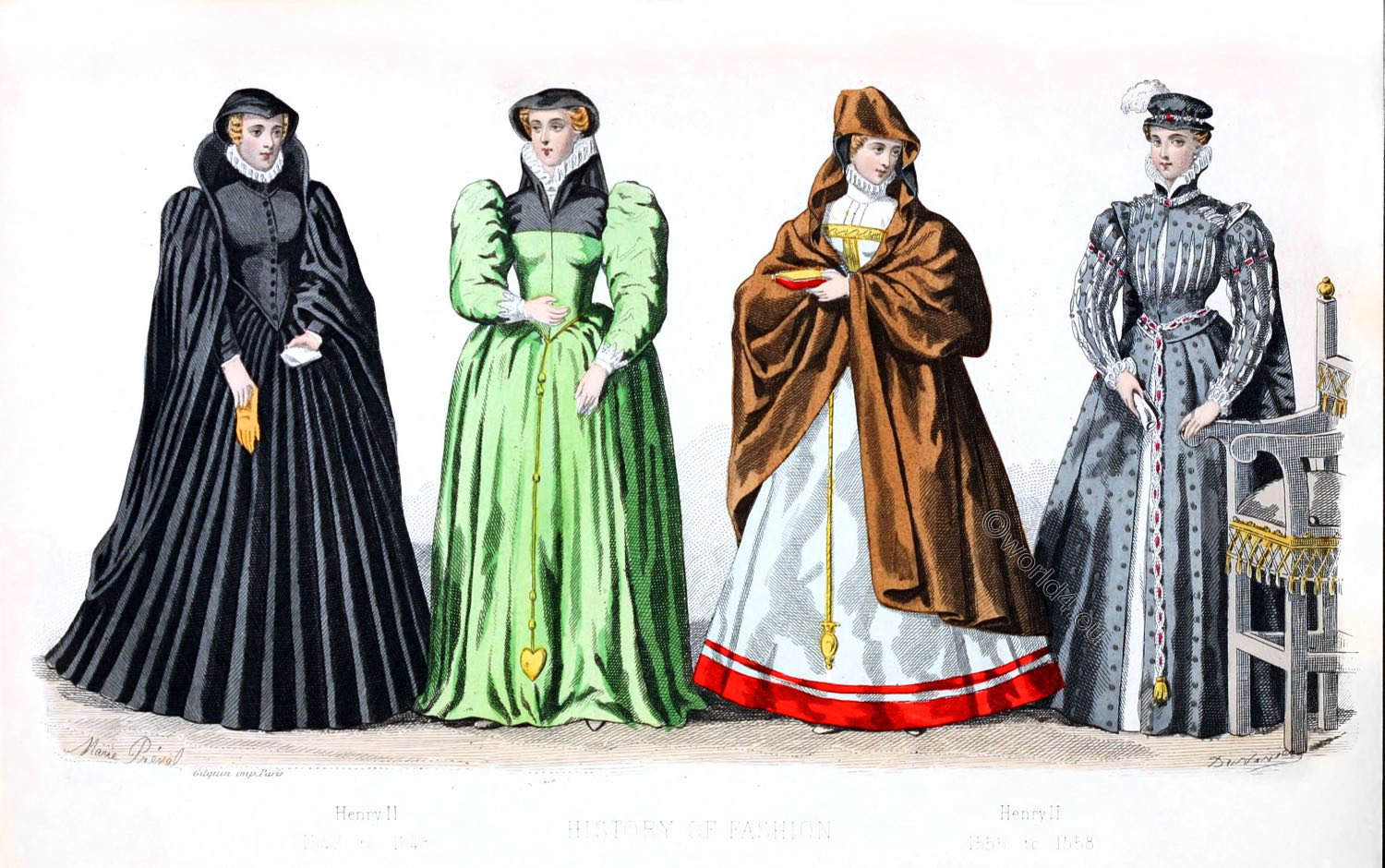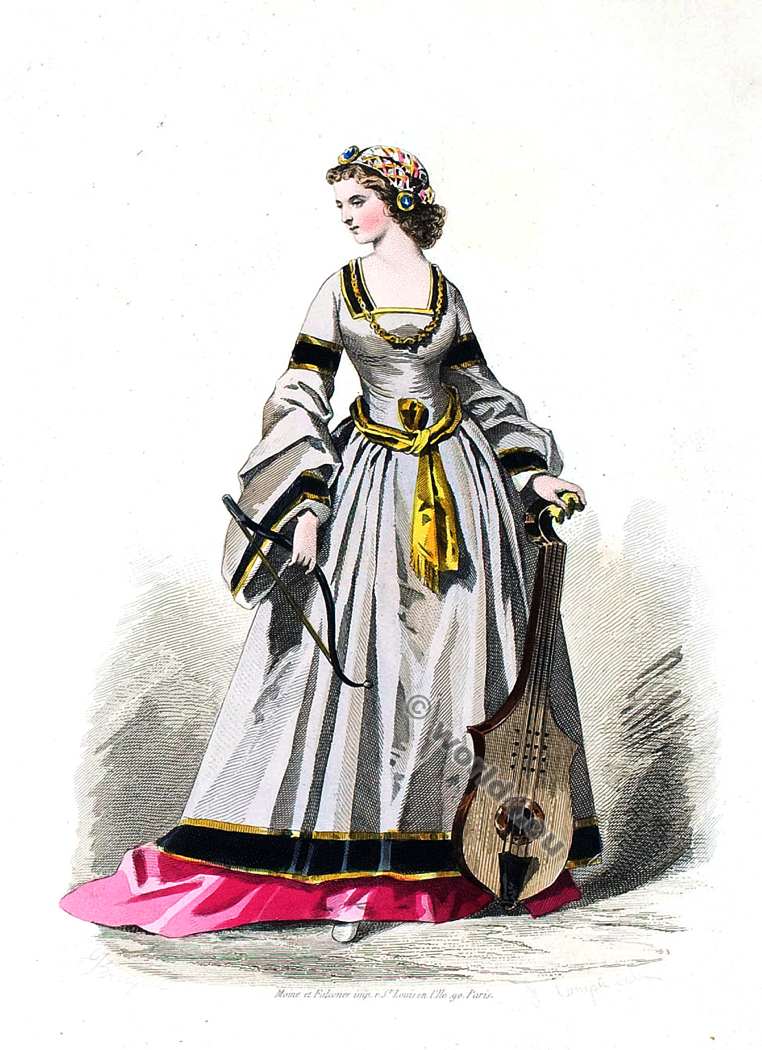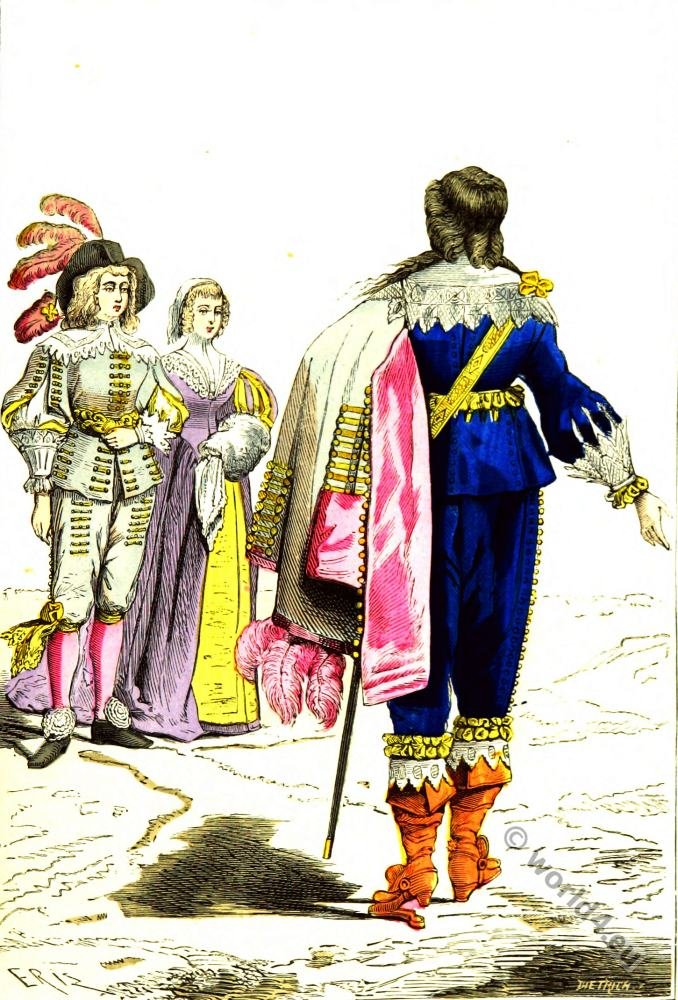Fashion under the Reign of Francis II. 1559 to 1560.
The earliest queens of fashion — Mary Stuart’s costumes; her jewels — Description of bodices and sleeves of that period — Crosses — The “loup” or small mask — Coiffure “en raquette” — An anecdote concerning high heels — Regulations respecting fashion — Remark of a lady of our own day on distinctions in dress — Exordium of the Edict of July 12, 1549 — Maximum of marriage portions — The first knitted silk stockings.
The earliest queens of fashion
Women of celebrity exercise a great influence on dress in general; and certain historical personages of the sixteenth century gave laws on the question of Fashion. Whether their celebrity overruled the caprices of their contemporaries, or whether their perfect taste compelled the approbation of the dandies and fine ladies of their time, certain it is that their portraits are typical, and could we be shown any of the costumes in which they have been painted, the original wearers would immediately be suggested to us.
Such a celebrity was Mary Stuart, niece to the Guises, and wife of Francis II., whose misfortunes and tragical fate have made her a deeply interesting character.
Mary Stuart’s costumes; her jewels
There existed, only a few years ago, among the rare books, manuscripts, and prints in the library of St. Genevieve, in Paris, two sketches in coloured chalk, being probably copies of portraits of the Queen of Scots, painted from life by the famous François Clouet, about the year 1558.
Those sketches, among many others, have been removed from St. Genevieve to the National Library, where they are less easy of access to the public than they formerly were in the less pretentious establishment of the Place du Pantheon.
Let us picture Mary Stuart in her youth, and again in her widow’s garb. Nothing can surpass the purity and delicacy of outline in those two portraits. Calm intelligence sits on her brow, and shines from her dark eyes. Her head is dressed in the Italian fashion, as was then the custom at court; a high collerette encircles the throat, round which is a pearl necklace.
On the day of her marriage with Francis II., the beautiful queen wore a gown of dark blue velvet, “covered with jewels, and white embroidery of beautiful workmanship, so that it was admirable to see.” Two young ladies, standing behind her, bore her long train. On her head she wore so splendid a coronet of jewels, that it was valued by many persons at 300,000 crowns, about 1,800,000 francs of our present money.
At balls, the queen of Francis II. wore a train nearly twelve yards in length; it was borne after her by a gentleman. Nothing could be more majestic than the royal mantle thrown over the gown on occasions of ceremony. Mezeray describes Mary Stuart as wearing a ruff open in front and standing high behind. Her hair is arranged in two curls that only cover part of the ear; her crown is placed on a wide and starched coif, coming down on the forehead, and widening at the sides. She was fond of jewels. When, on the death of Francis, she was setting out for Scotland, her uncle, the Cardinal de Guise, suggested that she should leave her jewels behind, until he could send them to her by some safe hand.
“If I am not afraid for myself,” said Mary Stuart,”why should I fear for my jewels?”
Description of bodices and sleeves of that period
But we must now leave individual history, in order to continue our account of feminine attire in general. At the period of which we are now treating, the shape of dresses was extraordinarily elegant, and they have often been cut on the same outlines since, in the varying phases of French Fashion. It will be observed that the bodice is generally provided with epaulette«, and with a basque two or three inches in depth. It was usually worn high up to the throat, and opened sometimes between the throat and the waist, in order to display the under-garments, especially a waistcoat or “pourpoint” of handsome material. Sleeves were moderate in size, and became narrower as they approached the wrist; they were drawn in at equal distances so as to torm puffs, and thus were not unlike the leg-of-mutton sleeves in fashion at the Restoration. Occasionally the bodice was slashed, and the openings of both bodice and sleeves were drawn together by knots of pearls, or the “fers,” of which we have already spoken. An embroidered or goffered collerette stood up round the throat; it was attached to a cambric handkerchief, that still bore its old name of “gorgias.” When low bodices were worn, the gorgias covered the shoulders and neck.
Gowns of silk or velvet, of light or dark tint, and gowns of crimson Genoa velvet, were opened in front, over an underskirt of some pale colour. The opening, beginning in a point at the waist, became gradually wider, somewhat in the shape of a pyramid. A girdle of beads or gold hung from the waist, and was often connected with ornaments of the same nature trimming the bodice.
With a standing-up collerette there was no need of a necklace. But with low-cut bodices, ladies wore pearl or gold necklaces, from which was usually hung a valuable cross. At the present day also crosses are very frequently worn. In a certain collection there is a necklace of the sixteenth century, composed of six cameos of tragic and comic heads.
We must add that there were ladies who wore necklaces even with standing-up ruffs, as may be observed in the fourth figure of our engraving, which gives the costume of a French lady in the suite of Mary Stuart.
The wives of nobles and of great merchants used both rouge and white paint on their faces, and some of them adopted the “loup,” or small black velvet mask, to preserve their complexion from sunburn. Masks received the name of loup, or wolf, because at first young children were frightened by them.
The head-dress of the period was the “cale,” or little bag in which women imprisoned their hair, and above tliis they placed a cap or toque with white feathers. They retained hoods also, or else they wore coifs, generally of velvet, bent down over the forehead, and with a veil attached behind. Little could be seen of the hair, beyond two rolls, one on either side of the temples.
Lastly, some ladies, Mary Stuart and her attendants in particular, had their hair curled, confined it in a light net, and encircled it with a diadem of beads or metal.
An anecdote concerning high heels
The coiffure “en raquette” consisted of open basket-work plaits. Low shoes and slippers were still exclusively worn; but when it was necessary to leave home and brave the mud, or when ladies wished to add to their deficient stature, they wore light pattens with cork soles over their house shoes. In the latter case, pattens occasionally became perfect pedestals, marvellously increasing the height of dwarfs, and laying them open to many ill-natured jests.
“I recollect,” says Brantôme, “that one day, at court, a very fine and beautiful woman was looking at a tapestry whereon Diana and her nymphs were very innocently depicted in short garments, and displaying their beautiful feet and legs. Beside this lady stood one of her companions, who was very short and small, and who also was admiring the tapestry. ‘ Ah, my dear,’ said her friend, ‘if we were all dressed after that fashion, you would not gain by it, for your high pattens would be seen. Be thankful to the times and to the long skirts we wear that hide your legs so neatly—the which, with their great pattens, are more like clubs than legs; for if any one had no weapon for fighting, he need but to cut off your leg, and holding it at the knee, he would find your foot and shoe and patten would strike right well.”
May we not say the same thing at the present day? Now that little women wear inordinately high heels to give themselves the appearance of middle height, dwarfs are induced to think themselves almost giants.
Remark of a lady of our own day on distinctions in dress
But without further digression let us return to the fashions of 1559-60, and to the edicts of the period.
When we speak of past fashions, alas! we must always mention sumptuary laws at the same time; that is to say, remedial measures against the excesses of caprice and luxury. As if wisdom could be decreed by law!
We know their unsuccessful results. But even at the present day, when difference of rank is no longer marked by difference of dress, we sometimes meet with persons who are indignant with a working woman if she ventures to wear a silk gown or a velvet cape on Sunday.
“No, I cannot understand the Government not interfering,” exclaimed a charming “great lady,” the other day in my presence.” Only a week ago I was almost elbowed in the Champs Elysées by a girl with a gown identically like my own! It is really disgraceful!”
In a conciliatory tone I replied, “Probably she had good taste like yourself.”
“It is disgusting ! because, after all, the rest of the costume did not harmonize with the gown, and the effect was wretched.”
“You must have been glad of that, madame.”
“Glad?”
“Yes; for harmony is everything, or almost everything in dress; and if that voung work woman could not display an Indian shawl like yours, you have nothing to complain of.”
“On the contrary, I do complain. Extravagance and ‘equality’ in dress are the ruin of scores of working girls. There ought to be a law against it.”
“There were laws in former times, madame,” I replied; “but they were an absolute failure.”

And then I repeated almost word for word what I have said farther back in this book, concerning reforms imposed by law. But all my arguments failed to convince my hearer, who was blinded by her prejudices. It is certain that sumptuary laws, even if they could be revived at the present day, would be as ineffectual as in the Middle Ages or the Renaissance. Neither fines nor even imprisonment would put a stop to coquetry, in whatever rank of life.
Exordium of the Edict of July 12, 1549
The opinions of my fair friend were probably the opinions of ladies in the reign of Henri II., for in the exordium of an edict issued by that king on July 12, 1549, we read that “gentlemen and their wives went to excessive expense for their gold and silver stuffs, their embroideries, braids, borderings, goldsmiths’ work, cords, cannetilles (A gold or silver thread with a spiral twist, formerly much used in embroidery.), velvets, satins, or silks striped with gold and silver.” These articles, therefore, were forbidden, except to princes and princesses. Those exalted persons, however, set a bad example in the matter, that was too often followed.
Maximum of marriage portions
The chapter of prohibitions having been thus begun, arbitrary measures became numerous. A maximum was actually fixed for marriage portions! Fathers and mothers, or grandparents giving their daughter or granddaughter in marriage, might not endow her with more than 10,000 livres (Tournois)! Truly a most obnoxious regulation! for was not such a law an interference with marriage, and an encroachment on the rights of parents?
The wives of plebeians were forbidden to wear coats like ladies, and head-dresses of velvet. Dark colours only were permitted them, and common materials.
But of what avail are severe laws, when broken? The stream of fashion was in favour of splendid garments, and of all the aids that are given by dress.
The first knitted silk stockings
The first hand-knitted silk stockings were worn by King Henri II., at the wedding of Marguerite of France with Emmanuel-Philibert of Savoy, in the month of June, 1559. The common people, and even the well-to-do classes, continued for a long time to wear stockings made of pieces of stuff sewed together.

Extravagance and luxury pursued their way, and became more versatile and ruinous than ever. Men and women spent their money, as well as money that was not their own, on dress. Frenchmen and Frenchwomen seemed bent on proving themselves absolute arbiters of fashion.
Now to hold the sceptre of taste and toilet involves obligations as onerous as nobility itself, and to excite the admiration and envy of coquettes is a costly privilege.
Source: The history of fashion in France, or, The dress of women from the Gallo-Roman period to the present time by Augustin Challamel, Frances Cashel Hoey, John Lillie. Publisher: New York, Scribner and Welford, 1882.
Related
Discover more from World4 Costume Culture History
Subscribe to get the latest posts sent to your email.


